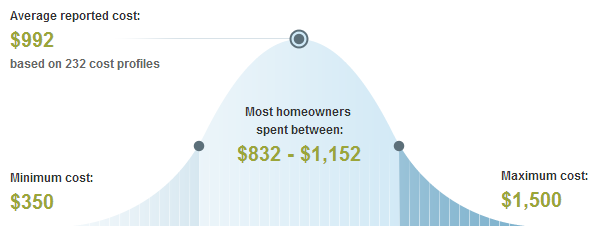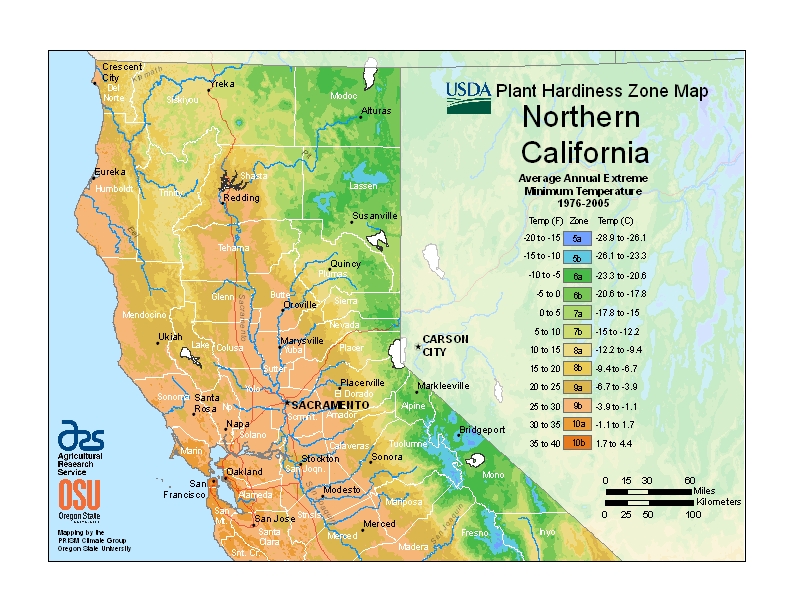Skip to a section:
- Costs – With San Francisco, California handing over more than half of its street trees to residents for care, it’s important to know what the costs will be for maintenance and possible removal. We have those numbers.
- FAQs – Now that residents are becoming more involved in the day-to-day green management of their city, information on trees that thrive or don’t in San Francisco, along with the plant hardiness designation for the city, tree disease information–all that is information we have here in one place, along with other tidbits for those interested in planting trees in the area.
- Services – In case we’re missing an answer, we have the information for all of the arborists in the Bay Area.
How Much Do Tree Services Cost in San Francisco?
San Francisco, California has started to hand over responsibility of some street tree maintenance to residents of the city. It’s important to know what financial responsibility comes with this now ahead of time, rather than what fees could be incurred by not maintaining them. Learn more about the average prices for tree trimming, cutting, pruning, removal and stump uprooting below.

How Much Does Tree Removal Cost?
Tree removal in San Francisco will cost tree owners an average price of $992. This will factor in height, circumference, general labor costs, and the time it will take to get the tree cut down and hauled away. Depending on the simplicity or complexity of the project, the price can vary between $832 and $1,152. The arborist will usually come over and give a quote without charging anything.
How Much Does Stump Removal Cost?
Stump removal in San Francisco is usually a simpler process than removing a whole tree. It will cost around $200 and take about an hour for the arborist to either uproot the entire stump and haul it away or grind the stump down into wood chips and leave the stump in the ground, low enough though not to be any trouble for a lawnmower. They will discuss the options with you when they come out, and price will vary based on the process.
Average Cost of Tree Maintenance in San Francisco
Tree maintenance, including trimming, pruning and cutting, will cost San Francisco tree owners an average price of $637 depending on the state of the tree and the number of trees to be pruned the first time the arborist comes out. The price can change depending on the state, fluctuating up or down between $526 and $748 during the first or subsequent tree maintenance appointments. Discuss this with the arborist and schedule regular maintenance appointments to keep the tree healthy and costs down.
San Francisco Tree Facts & FAQ
There are 100,000 street trees in San Francisco. As of now, the city only maintains 40,000 of them on a regular basis. This means that more than 50 percent of them are now within the care of residents of San Francisco. As such, it’s important for you as new tree owners to be aware of some factors associated with owning a tree in the area. The information below is also useful for those wanting to own a tree in the San Francisco.
Rules and Regulations
Tree removal on private property does not require a permit unless the tree happens to be a landmark or is within the public right of way and considered “significant”. However, the street trees recently given over the citizens of San Francisco do require a permit for removal if residents want to take them down for some reason. Additionally, the city has strict pruning regulations for the street trees. If they aren’t properly cared for, residents will be fined. The best time to remove a tree in San Francisco is in January. Trees are growing more slowly then than during the spring and summer, which means it will be easier to prune and uproot.
Common Trees to Plant in San Francisco
The top seven most common trees in the area were discovered by the City of San Francisco and Friends of the Urban Forest (see chart below). All seven are non-native to San Francisco. They include:
- Brisbane box (Lophostemon confertus) – 602 documented trees
- Sycamore London plane (Platanus x hispanica) – 562
- New Zealand Christmas tree (Metrosideros excelsa) – 412
- Hybrid strawberry (Arbutus marina) – 366
- Mayten (Maytenus boaria) – 290
- Red flowering gum (Corymbia ficifolia) – 270
- Cherry plum (Prunus cerasifera) – 287
Image courtesy of Visual.ly
Fruit Trees that Thrive
Since San Francisco enjoys an almost year-round growing season, it’s just about open season on what can be grown there in terms of fruit trees. Citrus, apples, pears, cherry, strawberry, pomegranate, and peaches are among a few of the many, many kinds of trees that thrive in the temperate climate the Bay Area offers in terms of inviting agricultural conditions for home fruit growers.
Tallest Tree
Although not within San Francisco (just a 30-minute drive away), down the road in Muir Woods National Park is one of the tallest sequoias San Francisco residents can see without driving all the way further north to see the tallest in the state. A coastal redwood stands the tallest in the park at 254 feet and is a great getaway for residents who want to see a tall state tree without going too far.
Difficult to Maintain Trees
While San Francisco has many non-native trees comprising its forestry, some of them are overrunning the city and taking over the native tree population. Blue gum eucalyptus, Monterey pines, and Monterey cypress are among some of the top three virus-like trees that are invading San Francisco and spreading too rapidly for the native trees. It’s best to avoid planting or trying to maintain these species.
Common Diseases Affecting San Francisco’s Trees
San Francisco’s wide variety of tress unfortunately lends itself to different diseases and pests infecting the trees in the area. Fire blight and powdery mildew are two infections common to trees in the area that show visible symptoms on the trees and need to be pruned off to avoid further inner damage to the tree. Anthracnose and short hole fungus are two fungal infections that attack trees. While short hole is more of a cosmetic fungal infection, anthracnose can cause more far-reaching consequences to the tree if untreated.
Rules Regarding Trees and Overhead Power Lines
The city requires that trees be planted at least 10 feet away from overhead power lines. The city’s utility company, PG&E, regularly inspects vegetation around their power lines and prunes them as needed. If residents do hire someone to prune trees near power lines, PG&E recommends that those tree service professionals be well-versed in electrical safety, or else their workers and the resident could be injured.
Plant Hardiness Zones in Northern California
Here are the plant hardiness zones for Northern California as provided by the USDA:

Local Tree Services in San Francisco

